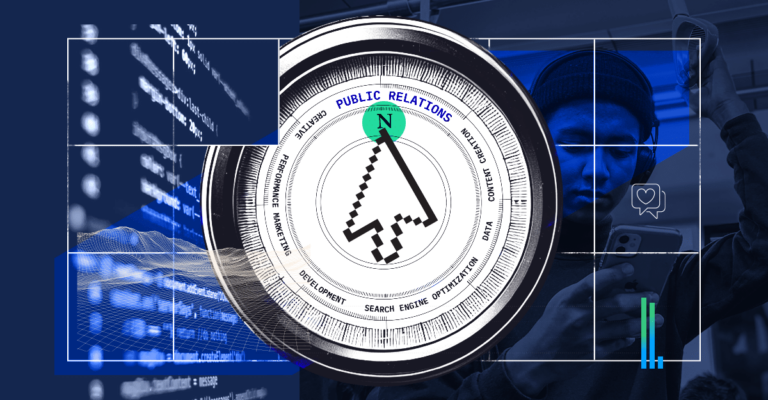
Moderator Greg Finn guided speakers Tami Dalley, VP of Analytics and Insights at Buddy Media, Monique Pouget, Senior SEO and Social Media Strategist at Thunder SEO, Courtney Seiter, Community Manager at Raven Tools and AIMCLEAR‘s own Merry Morud. Their session proved to invaluable for marketers looking to hammer home their worth when it comes to showcasing a brand via Facebook and Twitter. Read on for a full recap of the juicy goods!
First up, Courtney began by explaining, “There is no super equation which can quantify social media ROI.” Aw, shucks! That would have been nice, but with only 20% of CMOs thinking social media is actually measurable and with 100% of us (hopefully) knowing social media is working for us even if we can’t define it in the classic ROI sense, we need to be able to prove that what we know is working actually is working.
3 Things Every Marketer Must Do In Order to Prove ROI through Social Media
- We must know our business goals
- We must align our social media metrics with our goals
- We must break down our metrics so everyone at our company speaks the same language
But where do we even begin when setting up our social media goals? First, let’s establish what types of social media goals are out there:
- Growing brand sentiment
- Increasing reach
- Focusing on engagement
- Finding brand advocates
- Building brand trust
- Making sales
- Improving customer support
- Product development
- Gaining marketing insights
- Creating brand loyalty
Courtney uses Gilt Groupe as an example of properly utilizing social media to prove your worth. Guilte Groupe noticed that a lot of its customers were loading online shopping carts up with items and then leaving the page. By taking a look at its trusty online community via their social channels, Guilte Groupe was able to glean that their customers thought the $8-$10 shipping rates were too expensive to justify making the purchase.
What did they do in response? They lowered their shipping costs to a flat $6 rate, thereby increasing shopping cart conversions by 10%. Conversations are happening out there, brands just need to be actively listening to the chatter – it must surprise you what people are saying and it can certainly help to address some issues.
So, how do you actually measure the ROI of your social media goals? Courtney offered up a few examples. In order to measure brand sentiment, she suggested measuring the volume of posts and impressions, the number of positive review generated, and the average resolution time.
To measure the quality of customer support, consider the reduction in support costs to the company, the reduction in on-site support, increased resolution rate and improved customer happiness.
What about product innovation? Some important metrics to contemplate include the number of new product ideas, the number of new product ideas built, research time saved and traditional research cost savings.
When breaking down the ROI of your social media efforts internally, break it down in these suggested segments:
- By goal
- By campaign
- By time period
- By medium
- Even by post
Next to take center stage was Monique, who discussed how to measure the ROI for social media sweepstakes. Describing a particular client who wanted to create a sweepstakes program that would generate more engagement in Facebook and Twitter, Monique and her team played to the community’s ego by asking them what their insider secrets about a particular region were – what were the cool hangouts and hotspots?
In order to better track the results, they had five separate sweepstakes and offered prizes like a night out on the town or a theatre performance, paying special attention to choose vendors that already had social media presence. In addition, they made sure to measure all the costs involved in the sweepstakes process.
Monique’s team used Wildfire to manage their sweepstakes program. Wildfire allows you to create a consistent brand standard, and adheres to Facebook’s required use of a third party app to run a sweepstakes program. While you can’t force people to Like your page, you can encourage people to like a page from a banner ad, for example. People could enter the sweepstakes in additional ways by tweeting, writing on the Facebook wall, writing a blog post, or even via YouTube video.
All of this is exciting, fine and dandy news, but what about the KPIs? Well, here’s the down-low on what their team used to measure their ROI:
- E-mails
- Social referral traffic
- Website traffic from a link
- Leads
- Banner and Facebook ads
- Entries into the sweepstakes
- Twitter engagement
- Facebook engagement
Moving beyond KPIs, how do you track conversations? A good tool for convincing upper management that you need to invest in analytics and reporting tools is Storify – it allows you to bring in statistics from all over the web and shows conversations happening across social channels.
When it was Tami’s turn, she asked us, “What do you do to justify investment in social media analytics tools?” How do you present it to the boss? How do you measure success? How do you measure value?
Since the value of social is different to every brand, it’s important to measure on a case-by-case basis. You are tasked with determining the best measure of value for your client’s business goals.
How are other brands measuring social?
- Reach
- Buzz
- Engagement
- Participation
- Transaction
- Advocacy
Noting that there is tremendous value through social sharing, Tami recommended embedding share buttons to drive referral traffic, sales and conversions. Share buttons can act as great product advocates because sharing has no variable costs.
- Cost of each share = $0
- Cost per impression = $0
- Cost per visit = $0
- Cost per download = $0
Furthermore, sharing drives both micro and macro conversions. To justify the investment, connect the dots to conversions and sales. You need to measure these things so you can show your boss why you need to track shares.
One concept that plainly stares every marketer in the face but often gets overlooked is the market research opportunities available to us through soliciting opinions from your fans. You have the power to directly ask your fans what they’re thinking, so do it! Once you know what they want, apply it. If you know your fans want to be able to search your retail website by size or color, make sure you make it happen. Your fans will be happy, you will be happy.
Last but not least, Merry took the stage to get us all thinking about what we need in order to have a solid Facebook measurement plan. We need to consider a few things here:
- Making goals
- Setting KPIs
- Identifying the size of our circles and the degrees of separation
- Finding opportunities for associating conversations
- Learning how our content is shared
- Delving into how people engaged with our content
- Researching our demographic audience
When it comes to Facebook Insights, here are some of the important metrics Merry recommended marketers watch out for:
- Total likes
- Friends of fans – this is your page’s reach potential
- People who are talking about this
- Weekly total reach
Emphasizing how organic social is going away, the trend toward paid organic is on the rise!
Merry moved on to discuss the features and benefits some third party tools have to offer:
- Various page management capabilities
- The potential to manage multiple accounts
- Social listening stations and hotspots
- Detailed analytics
- Attractive reporting
A few tools for measuring buttons and URLs Merry mentioned include bit.ly, ShareThis and AddThis, the third of which offers free location demographics and the ability to identify who your top influencers are.
When it comes to Twitter, these tools pack a punch when it comes to reporting:
Be sure you are tracking keywords, reach, volume, users, and which platforms you have been reached.
Onward and upward! For Facebook, the following tools offer some varying degrees of measurement capabilities:
- CrowdFactory
- Wildfire
- PageModo
- Virtue
- Shoutlet
If you want to track management and analytics in Facebook, don’t forget about Hootsuite, a panel favorite, Media Funnel, Buddy Media, Awareness, and Lithium. Some of the capabilities for Lithium include the ability to post to social media channels, multiple account management, stellar analytics and reports, areas for team collaboration, posting intel, development of tabs, and contests and Like-gate.
What are some strong tools for social listening and analytics? Both Sysomos and Radian6 have some pretty great capabilities. What about when it comes to monitoring SEO, PPC, and social? Merry listed Raven Tools as a favorite because it offers white label reports, integration with Basecamp, various social monitoring tools, a posting tool, and a persona manager.
And that’s about it for our coverage of this session and of #SMX West 2012! Hope this session answered some of your questions about investing in measurement tools and we hope you had a great time following along on Twitter and right here on AIMCLEAR blog. We had a blast at the show this year and are excited for #SES New York coming up right around the corner. Hope to see some of you there!









